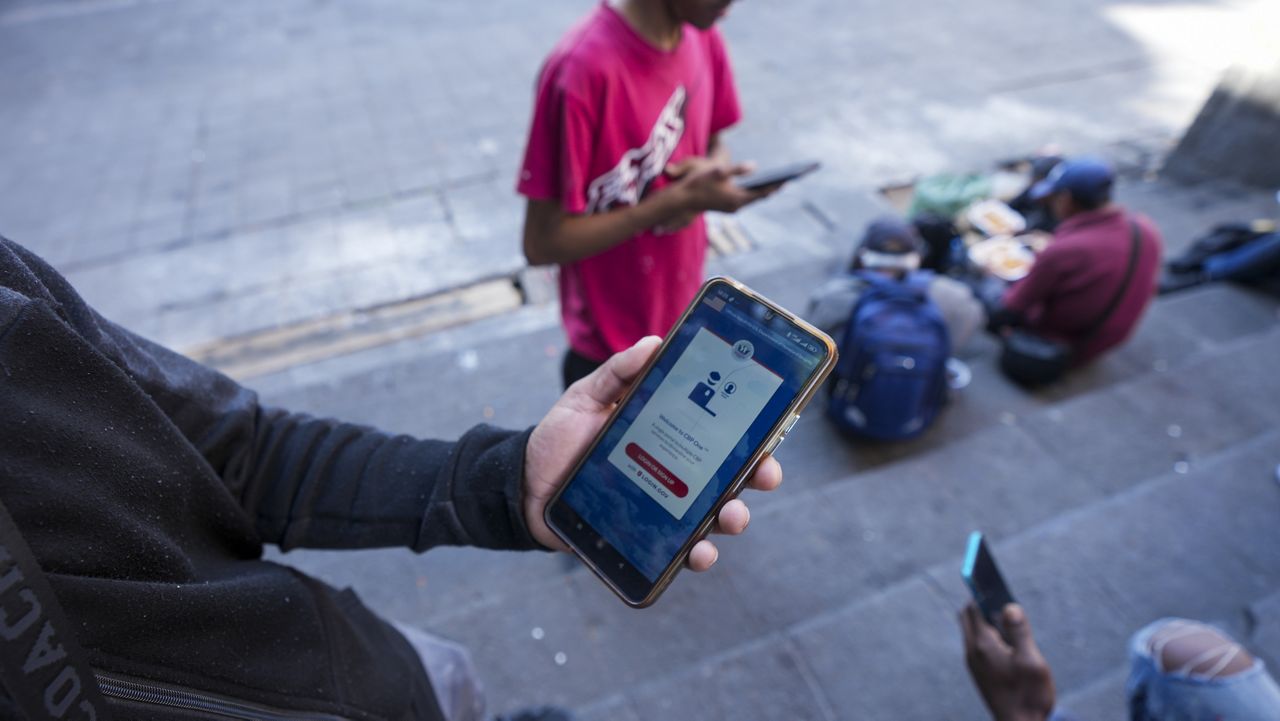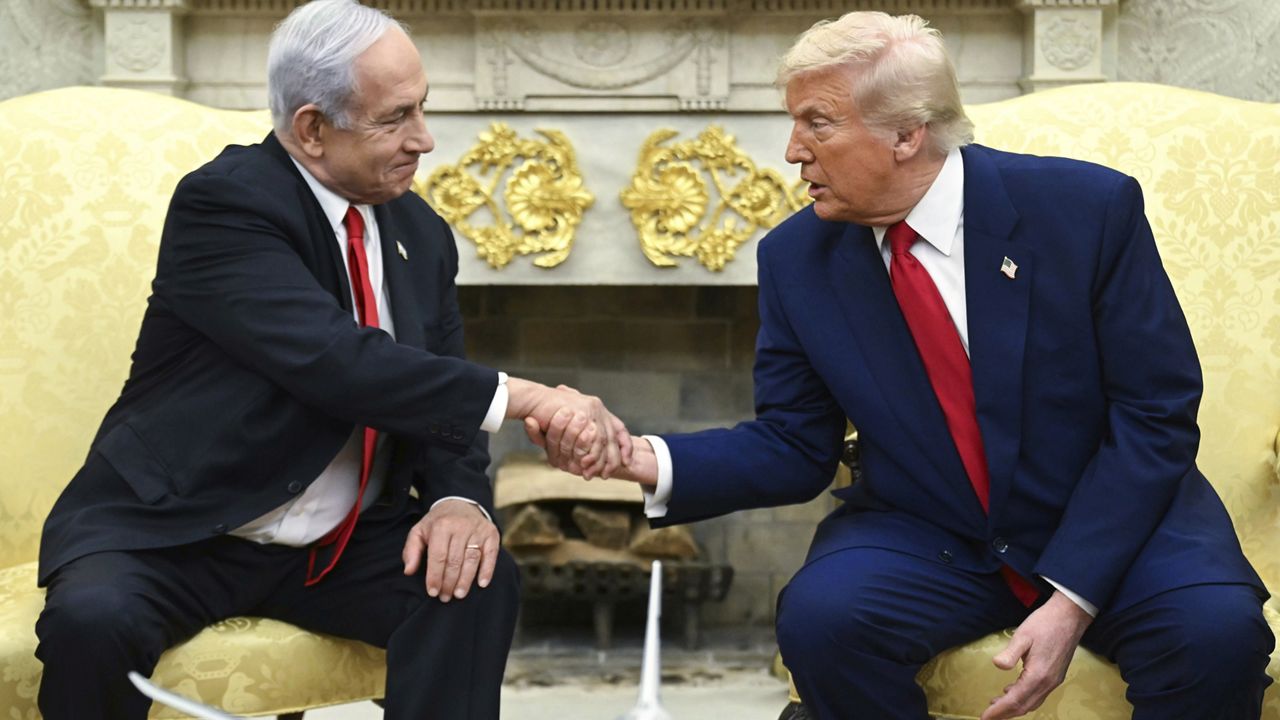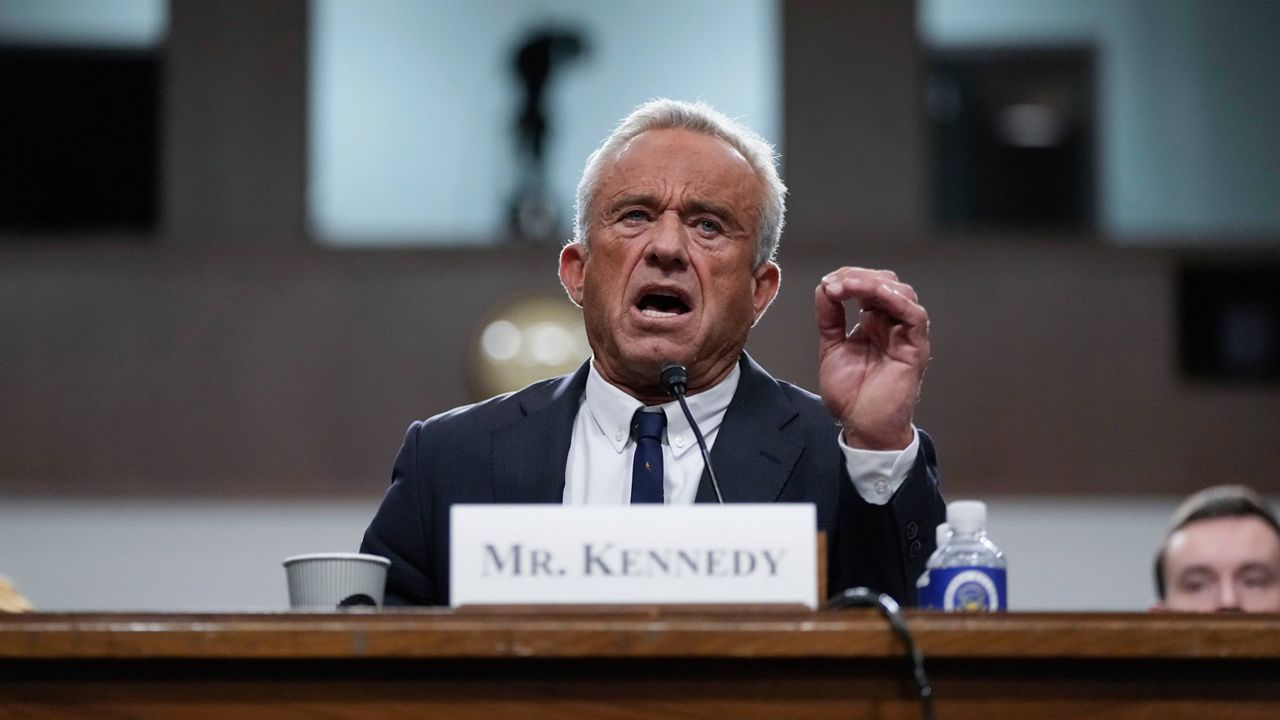It’s time for the federal government to stop dismissing UFO sightings and focus on finding answers, current and former officials said in a “60 Minutes” report that aired Sunday night.
What You Need To Know
- In a "60 Minutes" report that aired Sunday night, current and former officials said it's time for the federal government to take UFO sightings more seriously
- The report featured interviews with pilots who witnessed mysterious flying objects, some of which defied physics as we know it
- Director of National Intelligence Avril Haines and Defense Secretary Lloyd Austin are scheduled to deliver a report on UAPs to the Senate Intelligence Committee next month
- Rubio, who has received classified briefings on UAPs, admitted that some of his Senate colleagues “giggle” whenever the topic is brought up
The report featured interviews with two former Pentagon officials who analyzed UFOs — or as they are called by government agencies, “unidentified aerial phenomena,” or UAP — as well as with pilots who witnessed mysterious flying objects.
Director of National Intelligence Avril Haines and Defense Secretary Lloyd Austin are scheduled to deliver a report on UAPs to the Senate Intelligence Committee next month.
“Anything that enters an airspace that's not supposed to be there is a threat,” said Sen. Marco Rubio, R-Fla., who ordered the report when he was still chairman of the Intelligence Committee last year.
Lue Elizondo, former director of the Pentagon’s Advanced Aerospace Threat Identification Program, or AATIP, said some of the UAPs that have been seen defied physics as we know it.
“Imagine a technology that can do 6-to-700 g-forces, that can fly at 13,000 miles an hour, that can evade radar and that can fly through air and water and possibly space,” he said. “And oh, by the way, has no obvious signs of propulsion, no wings, no control surfaces and yet still can defy the natural effects of Earth's gravity. That's precisely what we're seeing.”
Navy Cmdr. Dave Fravor and Lt. Cmdr. Alex Dietrich told “60 Minutes” about the time in November 2004 when they were ordered to fly planes to investigate what operators called "multiple anomalous aerial vehicles” detected by radar for a week off the coast of Southern California. The objects were said to have descended 80,000 feet in less than a second.
The pilots came upon an area of roiling whitewater in the otherwise calm ocean with a “little white Tic Tac-looking object” floating above it, Fravor said. As his F/A-18F descended, the object — roughly about the same size as his plane — ascended until it was directly in front of him, the pilot said. The UAP, which had no markings, wings or exhaust plumes, then disappeared, Favor and Dietrich said. It was detected by radar again seconds later about 60 miles away.
“I don't know who's building it, who's got the technology, who's got the brains,” Fravor said. “But there's something out there that was better than our airplane.”
Former Navy pilot Lt. Ryan Graves said his squadron spotted UAPs hovering over restricted airspace off the East Coast every day for a couple of years.
Graves speculates they were either a secret U.S. technology, an adversary's spy vehicle or something from another world. He said he thinks it’s most likely that they were part of a “threat observation program.”
Whatever the explanation, Graves said the federal government needs to take the events more seriously.
“I am worried, frankly,” he said. “You know, if these were tactical jets from another country that were hanging out up there, it would be a massive issue. But because it looks slightly different, we're not willing to actually look at the problem in the face. We're happy to just ignore the fact that these are out there watching us every day.”
The funding for AATIP, the program that Elizondo worked on, was cut in 2012. He and others kept working on the mission before Elizondo resigned from the Pentagon in frustration in 2017. As private citizens, he and Christopher Mellon, former deputy assistant secretary of defense for intelligence, have been working to call attention to UAPs in the press, hoping that it would spur Congress and the Defense Department to take a closer look at UAPs.
AATIP was resurrected in August 2020.
Rubio, who has received classified briefings on UAPs, admitted that some of his Senate colleagues “giggle” whenever the topic is brought up.
“I don't think we can allow the stigma to keep us from having an answer to a very fundamental question,” he said.
“I want us to take it seriously and have a process to take it seriously,” the senator continued. “I want us to have a process to analyze the data every time it comes in. That there be a place where this is cataloged and constantly analyzed, until we get some answers. Maybe it has a very simple answer. Maybe it doesn't.”
Ryan Chatelain - Digital Media Producer
Ryan Chatelain is a national news digital content producer for Spectrum News and is based in New York City. He has previously covered both news and sports for WFAN Sports Radio, CBS New York, Newsday, amNewYork and The Courier in his home state of Louisiana.








